I wrote this article in Japanese and translated it into English using ChatGPT. I also used ChatGPT to create the English article title. I did my best to correct any translation mistakes, but please let me know if you find any errors. By the way, I did not use ChatGPT when writing the Japanese article. The entire article was written from scratch by me, Saikawa Goto.
Introduction
Movies and books covered in this article
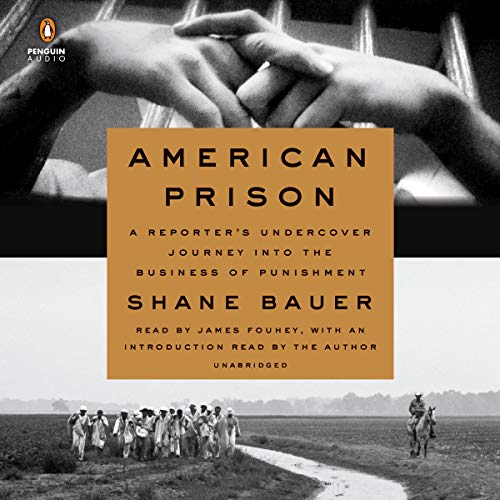
Three takeaways from this article
- The author describes in “American Prison” a real-life penitentiary where employees are paid only $9 per hour, not given tear gas or batons, and made to work with fewer staff than required.
- The shocking reality of the mistreatment of prisoners in such penitentiaries, where profit is the main focus, is witnessed by the author in various ways.
- Historically, in America, penitentiaries have been seen as places to make a profit.
Self-introduction article


Published Kindle books(Free on Kindle Unlimited)
“The genius Einstein: An easy-to-understand book about interesting science advances that is not too simple based on his life and discoveries: Theory of Relativity, Cosmology and Quantum Theory”
“Why is “lack of imagination” called “communication skills”?: Japanese-specific”negative” communication”
The quotes in the article were translated using ChatGPT from Japanese books, and are not direct quotes from the foreign language original books, even if they exist.
“American Prison” Reveals the Shocking Reality of Private Penitentiaries in America and the History that Led to the Perception of “Prisoners = Labor Force”
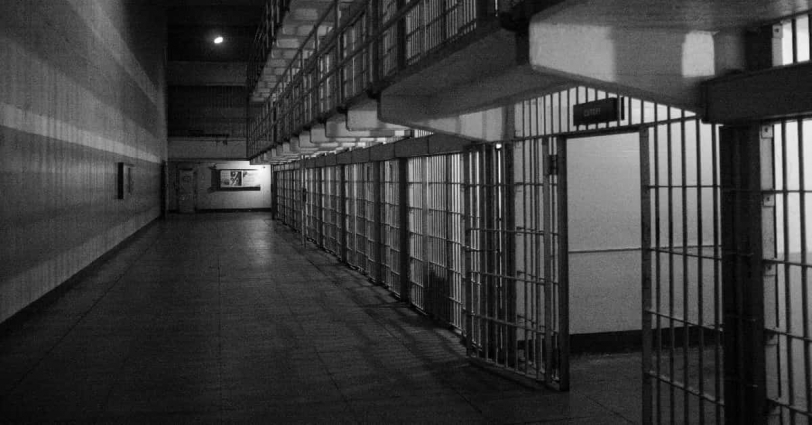
This book is unbelievable. I have read non-fiction and watched documentaries about penitentiaries and the death penalty before, but I was surprised to learn that there is still so much I don’t know. The book had a huge impact and even moved the US Department of Justice, shocking Americans nationwide.
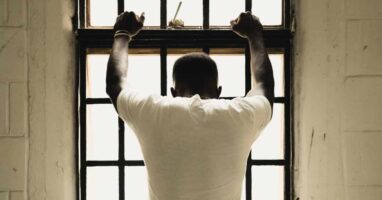
The way “prisoners” are treated in America has a quite unique history and therefore, penitentiaries are operated with a completely different common sense from that of Japan. The most understandable difference is that “private companies operate penitentiaries.” How did “private penitentiaries” come to be in America?
This Book Covers the Current Situation Surrounding “Prisoners” in America and the Author’s Undercover Reporting on the “Private Penitentiaries” Where He Worked as a Prison Guard
The theme of this book is “private penitentiaries,” which are penitentiaries operated by private companies. Before reading this book, I knew that such penitentiaries existed in America, but I did not have much knowledge about them.

I researched whether there are private penitentiaries in Japan, but it seems that there are no completely private ones. There are some that operate using a system called “Private Finance Initiative” where public and private sectors cooperate in constructing, operating, and maintaining public facilities. However, the idea of “private companies operating penitentiaries” doesn’t seem to be very common in Japan.
However, even in the United States, “private penitentiaries” are not the mainstream. There are about 1.5 million people in state and federal penitentiaries, and about 8% of them, or about 130,000 people, are in private penitentiaries. Moreover, the figure of 1.5 million does not include the number of people (about 700,000) detained in penitentiaries and detention rooms managed by counties and cities. If we include them, the percentage of those held in private penitentiaries would be about 6% of the total, which cannot be considered high in terms of proportion.

However, it is important to consider the fact that the United States has an extremely high number of prisoners in the first place.

The population of America is about 5% of the world’s total population, but in terms of the number of prisoners, it accounts for 25% of the world’s total.
This means that one out of every four prisoners in the world is in an American penitentiary. Even if the percentage in the United States is relatively low, the percentage worldwide is quite high. In Japan, there are about 50,000 prisoners. In other words, more than twice the total number of prisoners in Japan are held in private penitentiaries in America.
The author of the book infiltrated one of these private penitentiaries, although it was simply by applying for a job as a prison guard. The hourly wage was only $9, the same as Walmart, but the job of a prison guard is not something that can be done for such a low wage. As I read this book, I found myself muttering “seriously” many times because it is such an unbelievable world.

The author worked as a prison guard in such an environment for four months and publicly disclosed what he saw and heard. The response was tremendous. The contents of this book were initially published as a Mother Jones feature article in 2016. The afterword by the translator states,
The article, which exposed the reality of little-known private penitentiaries, was well received with a great response from all over the United States, and became the most read feature article since the founding of the magazine, winning the 2017 National Magazine Award.
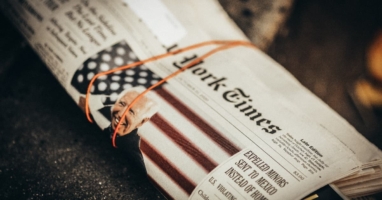
From this description, it can be seen that even people living in America were unaware of the realities described in this book. They probably couldn’t believe that such a world existed either.

This book, based on that article, was also received with great impact. In the afterword by the translator, it says,
The book was highly praised in various fields, including being chosen as one of “The 10 Best Books Through the New York Times” in 2018 and listed as one of former President Barack Obama’s favorite books in 2018. It also won numerous awards such as the J. Anthony Lukas Book Prize, Helen Bernstein Book Award for Excellence in Journalism, and Robert F. Kennedy Awards for Excellence in Journalism.
The response was incredible.

However, something even more surprising happened. The author wrote,
The most surprising thing was that I received an email from the Office of Inspector General at the Department of Justice asking me to talk about what I saw at Winn.
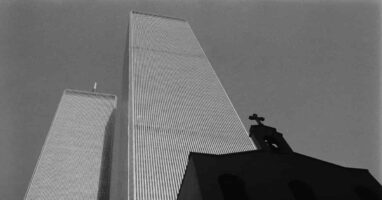
The author received a direct contact from the Department of Justice that manages the penitentiary. In response to the request, the author spoke about his experience. Then, two weeks later, an immediate response was taken.
The US government announced the cancellation of contracts with private penitentiaries. This decision only applies to federal penitentiaries and not state penitentiaries like Winn, but it still means that 13 penitentiaries, which incarcerate over 22,000 people, will no longer be privatized.

The author’s research moved the country. Unfortunately, this decision was made during the Obama administration, and President Trump overturned it. They decided to entrust the operation of the penitentiary to the private sector again because it was urgent to strengthen the crackdown on illegal immigrants and expand immigration detention centers. So they ended up back where they started, but there is no doubt that the author had a tremendous impact.
Of course, there would have been various reports that have prompted the government to take action in the past. The author’s story should be considered one of them. However, it is not such a simple story. At the beginning of this book, an interesting thing was written. It is said that in America now, so-called “infiltration coverage” is becoming difficult.

The trigger was when ABC News exposed the misconduct of a certain supermarket chain in 1992. A reporter went undercover and uncovered the truth of the fraud, which involved repackaging spoiled meat. However, the reporter made a false statement on the application form at the time. Well, it was a common tactic in undercover reporting until then, as being exposed as a reporter would be a big failure for the undercover mission. However, after ABC News reported on the fraud, the store actually sued the reporter, citing not only the false statement on the application form, but also “failure to perform the job assigned as a duty.” And the court accepted the store’s claim.

What is surprising is that “failure to perform the job assigned as a duty” was recognized as a legal violation. This is because the “job assigned” to the reporter was exactly the fraudulent act of “repackaging spoiled meat.” In other words, the court ruled that “if it is a duty assigned as a job, even if it is ethically unacceptable, there is an obligation to perform it.” It is easy to imagine that such a precedent would be a hindrance to undercover reporting.
Therefore, the author of “American Prison” conducted an undercover investigation by clearing all the ethical guidelines for undercover reporting set by a nonprofit organization and eliminating all possibilities of being sued. Of course, he applied using his real name, so if the penitentiary searched the internet with his name, they would have found “articles about penitentiary” he had written in the past. It can be said that this “undercover reporting” was made possible with the help of the “leniency of the penitentiary side.”
In such a highly constrained situation, achieving investigative journalism that moves the country is more than admirable.
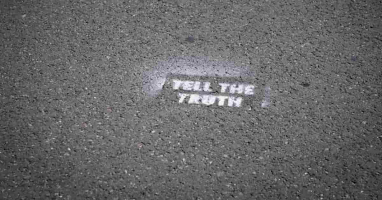
Now, let’s talk about the author’s intense experience of experiencing the reality of private penitentiaries.
The Author, Who Infiltrated as a Prison Guard, Saw What Kind of “Reality” in the Private Penitentiary
The author infiltrated Winn Correctional Center, operated by a company called CCA in Winfield, Louisiana. Although the author only saw the reality of this penitentiary, it is said that one should infer the situation of other private penitentiaries.
The most surprising thing for me was a photo posted in the middle of this book. It shows where the prisoners spend their daily lives, but it’s not a single room like we imagine when we hear “penitentiary.”
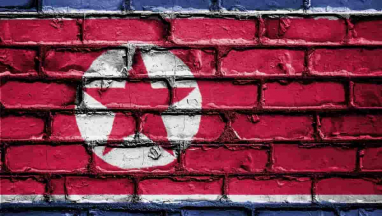
Moreover, it is an extraordinary large room. First, there are eight areas where up to 44 people can live and these eight areas (with a space for a total of 352 people) are considered as one unit, there are 5 units in total. And amazingly, there are times when only two prison guards are in charge of one unit. The prison guards are not even given tear gas or batons because it would be dangerous if taken them by prisoners. While the reason for this makes sense, the prison guards still have to face up to 352 prisoners unarmed. They are only given a radio and told to call for backup if needed, but due to chronic understaffing, there is no guarantee that help will come.
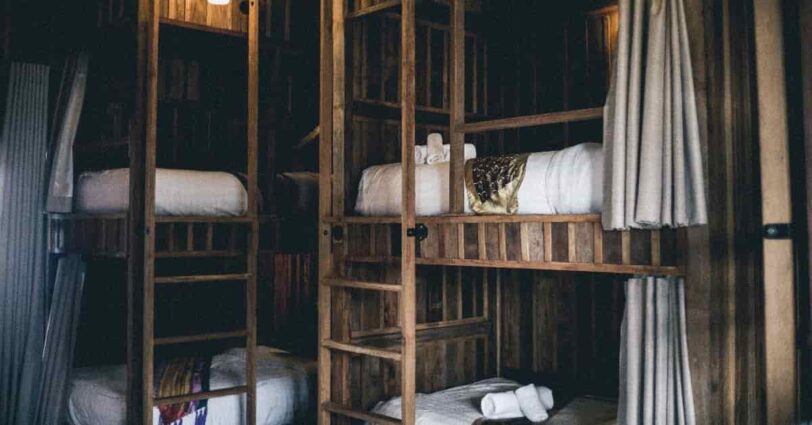
According to the contract with Louisiana State, 36 people are supposed to go to work at 6am every morning, and 29 of them must be present for a 12-hour shift. However, the author wrote that there were hardly any days when all 29 people were present. In most cases, the number of staff was below 29 and there have even been days with only 24 staff present. Due to a constant shortage of personnel, the large sports field has not been used for many years because there were not enough staff to manage the prisoners there.

In addition, something like this happened. Two weeks after the author began training, a prisoner attempted to escape. However, the staff did not notice until several hours after the escape. Although the fence had an alarm that should have gone off if someone touched it, no one checked the camera footage. Moreover, the route the prisoner took to escape should have been clearly visible to the staff in the watchtower. So why didn’t they notice the escape? It was because, in order to cut costs, the prison had stopped prison guards in the watchtower many years ago. It’s an unbelievable story.
There are many more stories like this. During the training, the author was made to sign a document agreeing to be exposed to tear gas voluntarily. Can you imagine the situation they were preparing for? At the penitentiary, prisoners are supposed to eat together in the cafeteria. If they were to start a riot en masse, the prison guards would have no way to stop them. In such a situation, tear gas is thrown in from outside to suppress the riot, so the staff must be prepared for it in advance. It is a workplace environment where you cannot do your job without agreeing to be exposed to tear gas beforehand.
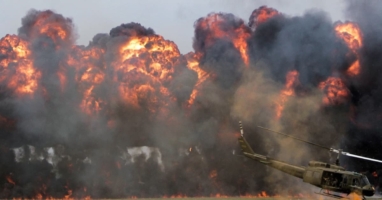
The medical expenses of prisoners are covered by the operating company CCA. Therefore, even if prisoners complains about their condition, the penitentiary does not provide them with medical treatment. One prisoner complained about a foot problem many times but was not taken to the hospital and eventually had to have both feet amputated due to necrosis. It’s terrible. The prisoner filed a lawsuit against the penitentiary and reached a settlement with CCA.
The terrible story continues. Due to lax management, there are cases of assault and murder in the penitentiary. If it were a public penitentiary, even prisoners would be tried in the usual way. However, at Winn Correctional Center, an “internal court” is held. After a few minutes of deliberation by staff, 96% of prisoners are found guilty and placed in solitary confinement. That’s the end of it. It is not a system that seems to be a rule of law. Of course, such treatment is likely to be unconstitutional.
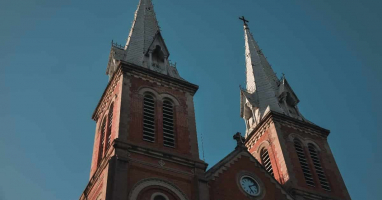
There are other cases that have been handled by the “internal court”. One prisoner took a large amount of medication in the penitentiary. The physician judged it to be a “suicide attempt”, but in the subsequent “internal court,” the prisoner’s actions were determined to be “self-injury.” You may wonder what the difference is between “suicide attempt” and “self-injury,” but it is quite different for the penitentiary. In the case of a “suicide attempt,” the prisoner cannot be punished, but in the case of “self-injury,” they can be punished. Therefore, the penitentiary recognized that the prisoner had engaged in “self-injury” and charged him for the “cost of ambulance transportation”. It’s truly a situation where they can do whatever they want.

The response to cases of “suicide” was also terrible, not just attempted suicide. The CCA did not report the fact of “suicide.” The reasoning they justified it was out of the ordinary. The penitentiary decided to release him on “compassionate grounds” when he was in a “brain dead” state before the prisoner died. In other words, they claim that he was no longer a prisoner at the time of his death, so there was no obligation to report it.
It’s crazy. It’s not even normal, it feels like “madness” itself. One day, a former director of the public penitentiary came to Winn Correctional Center and said that “this place is hardly a penitentiary at all.” It would be only natural.

In this way, in the United States, there are privately operated penitentiaries, and an unbelievable world is unfolding. But first of all, why is it possible for “privately operated penitentiaries” to exist? This is related to America’s long history.
In America, “Penitentiary” Refers to a “Place that Generates Profits”
If you perceive “penitentiary” based on the image in Japan, it may be difficult to imagine the motivation of private companies involved in its operation. Of course, prisoners are also made to work in the penitentiary (I have heard rumors that they print exam questions within the penitentiary to prevent them from leaking outside), and there may be a possibility of making a profit from such work. However, it does not seem like such an attractive business. There are probably not many people who would want to take it on with just the commission fees from the government.

However, reading a certain description in this book, I think you can understand why “private penitentiaries” can exist in America. This is the most surprising description in this book for me.
About two-thirds of private penitentiary contracts include a guarantee of occupancy rate – if they cannot send a certain number of inmates, the state will pay compensation. Under a contract with CCA’s Louisiana Correctional Bureau, Winn Correctional Center was guaranteed a 96% occupancy rate.
Do you understand? In other words, if the number of inmates in the penitentiary falls below 96% of its maximum capacity, the state will pay compensation. So, if the maximum capacity of the penitentiary is 1,000 people, the state will have to pay compensation if the number of inmates falls below 959.
Can you believe such a ridiculous story?

If you think about it normally, it should be better for there to be fewer prisoners in society. It is unacceptable to let criminals go free without arrest, but I think that if many people are aware of “realizing a society where crimes do not occur, resulting in a decrease in prisoners,” a society where crimes are less likely to occur should be established. However, in America, which has “private penitentiaries” that guarantee occupancy rates, such dynamics do not work. States that entrust the operation of penitentiaries to private companies must always maintain a certain number of prisoners.

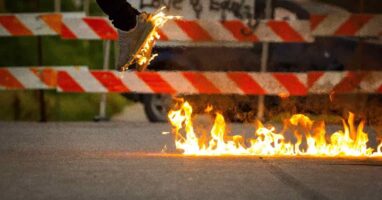
It seems completely incomprehensible from the perspective of Japanese people’s senses.
However, if you delve into the history of “penitentiaries” in America, such twisted ideas may become a little easier to understand. This book has a part that details that history, but if I were to explain its content in one word, I think the following quote is sufficient.
Penitentiaries are making large profits.

Yes, in America, “penitentiary” has always been a “profit-making place.” That’s why the idea of “private penitentiaries” was born.
So, let’s unravel the history behind the idea of “penitentiary = profit-making place” and how it came about.
The Birth of “Penitentiary” in America and the Establishment of the “Profit Model”
We go back to the 18th century.
In 1718, the “prisoner transfer law” was enacted in England. Until then, the only option for criminals was the death penalty, but it became possible for them to be “transferred to America for a minimum of seven years” at the discretion of the court. At that time, even stealing a silver spoon could result in a death sentence, and as a result, some prisoners even wished for “exile to America” themselves.

However, it costs money to transfer prisoners to America, so the British government decided to give the “ownership” of the prisoners sent to America to contracted companies. The companies would sell them to tobacco plantations and other places. For plantation owners, prisoners were cheaper than slaves, and there were aiso other advantages. Prisoners had a set term of work, which was convenient. When buying slaves, the owner had to take care of them even after they could no longer work due to old age. In contrast, by using prisoners, they could be released from such troubles.
Later, the situation changed after America gained independence. America decided to stop using the death penalty, which was commonly used in Britain, and instead use labor sentences as the main form of punishment. In other words, instead of “selling prisoners to plantations,” the method changed to “states imposing labor on prisoners.”


However, some people began to oppose this movement. The reason is as follows. The prisoners were forced to do labor in public, but they were afraid that citizens who saw it would think “labor = dishonor.” This argument was convincing because in the past, when black slaves accepted work, white people refused to “work.” In other words, they did not want to do what black slaves (prisoners) were doing.
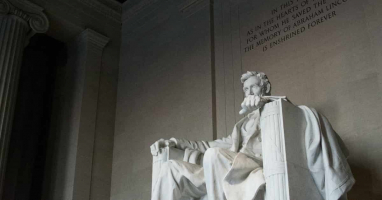
As a result of this movement, “penitentiary” was born instead of “jail.” These two are clearly different. “Jail” is a facility where inmates are held until the execution of their sentence, while “penitentiary” is a facility where the act of imprisoning itself is the punishment. This difference may be easier to understand when considering Japanese death row inmates. As many may know, Japanese death row inmates are housed in a “detention room” rather than a “penitentiary.” The “execution of the sentence” for death row inmates is the “death penalty,” and the period leading up to that is just a waiting period. That is why they are put in a “detention room” rather than a “penitentiary.”
As a result of criticism against “forcing labor in public,” a “penitentiary” was created for “forcing labor out of sight.”
However, this “penitentiary” system was not immediately accepted by the public. Rather, it was viewed with skepticism. The reason for this is the Revolutionary War. The reason why Americans fought the Revolutionary War was to “free white Americans from slavery.” And yet, even though they were criminals, making them work in a penitentiary was seen as no different from “forced labor.” There were also those who made a more realistic indicate. It was criticized that by gathering criminals in one place, “criminal techniques” could be shared and new crimes could be more easily born as a result.
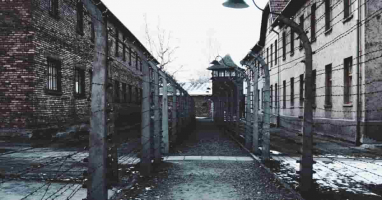
Despite the existence of such criticism, the “penitentiary” system ultimately survived, ironically, due to its connection to the “movement to abolish slavery.” White people feared that the release of slaves would lead to an increase in “free negroes.” And so, the “penitentiary” began to be noticed as a “facility to subjugate” such “free Negroes.”
However, the actual operation of the “penitentiary” was quite difficult. From the beginning, it was envisioned that “revenues would be generated by having prisoners make something and sell the finished product” in the “penitentiary,” but things didn’t go as planned. Moreover, at Auburn penitentiary in New York State, they tried to rent out the labor of prisoners to private businesses, but few businesses raised their hands. This was because riots and sabotage in the penitentiaries were known to the public.

The director of Auburn penitentiary decided to enforce strict discipline on the prisoners. As a result, the value of prisoners as “labor force” was reassessed. Local manufacturers gradually began to place production equipment inside the penitentiary, and the penitentiary was able to increase its revenue little by little. The Auburn penitentiary model spread throughout the United States, leading to the arrival of the “first penitentiary boom” in America.
From this history, the idea that “penitentiary = a place to make profits” became established.

The History of Overusing Prisoners as “Labor Force” and How the Ooperation of the Penitentiary was Outsourced to the Private Sector
After the Civil War, “slavery” was finally abolished. The 13th Amendment to the U.S. Constitution stipulated that “neither slavery nor involuntary servitude, except as a punishment for crime whereof the party shall have been duly convicted, shall exist within the United States.” However, as stated in the previous provision, there was one exception: “as a punishment for crime.” Some people began to take advantage of this loophole to make a profit.
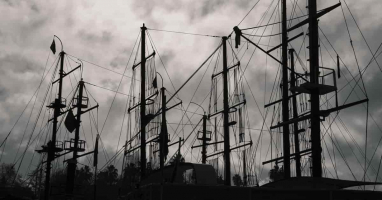
They thought that black slaves would be released one after another from now on, but many of them remained unemployed and would inevitably turn to crime again. Since “forced labor as punishment for crime” is not unconstitutional, they could borrow “criminals who used to be slaves” from the penitentiary and use them for forced labor. Former owners who had to release their black slaves were considering new ways to exploit them.
This trend continued for a while, which is not surprising. They were cheaper than free laborers, didn’t complain no matter how much they were made to work, and there were no penalties even if they died. It’s no wonder they found prisoners very useful.

However, the prisoners did not just accept their situation. That they rebelled and went on strike in opposition. They were definitely at a significant disadvantage in terms of force. However, their resistance was not meaningless because various costs began to accumulate in response to the situation of “prisoners may rebel”. As a result, the “economic rationality of using prisoners as labor” gradually faded. In addition, there were changes in the bidding system, and there was little difference in cost between prisoners and free laborers, so the lending of prisoners gradually declined.
The deciding factor was an incident in Florida where a 22-year-old white male prisoner died after being beaten by a prison guard. This incident became a major issue throughout the United States. A boycott of Florida products occurred, dealing a major blow to the tourism industry. As a result, finally the “system of lending prisoners as labor” was abolished in America.

However, it cannot be said that the treatment of prisoners has improved. They simply stopped being leased to private companies, but the forced labor itself did not disappear. The next place prisoners were sent to was a road construction site, where they were used for national projects. They were also made to work in plantations owned by state penitentiaries, where they harvested crops, etc.
Thus, even in the 1960s, more than 50 years after the leasing system for prisoners was abolished, the situation of prisoners being forced to work did not change. At that time, it was still possible to generate profits through this system, but eventually, all penitentiaries went into the red. The cost of managing a large number of prisoners kept increasing, making it impossible to run as a business.

The founder of CCA noticed this situation. He argued that “if you entrust the operation of penitentiaries to private companies, you can reduce state spending” and created the “privatization model for penitentiary operation.”

Looking at history in this way, it’s easy to understand the privatization of penitentiaries. Considering that penitentiaries have always been seen as a place to make a profit, and public institutions can no longer operate them effectively, it seems natural to entrust them to private companies. However, this is not a story that can be easily accepted. The more you learn about the reality of “private penitentiaries,” such as the one the author infiltrated at Winn Correctional Center, the more you realize that it is nothing but an illusion and cannot be established.
Conclusion
The author himself was once imprisoned in a penitentiary in Iran for 26 months, not because he did anything wrong, but simply because he got too close to the border. While trying to overcome his PTSD, he learned about the reality of American private penitentiaries. That’s when he decided to attempt an undercover investigation.

The author went undercover for an investigation, but to avoid being found out, he had to behave in a way that was “not unnatural for a prison guard”. However, because so many inhumane things were happening within the penitentiary, the author found himself conflicted about what actions to take in various situations. By trying to behave in a way that was not unnatural for a prison guard, the author’s usual personality and gestures were also affected. As suggested by the controversial “Stanford prison experiment”, which has also suspicions of fabrication, trying to fulfill a role can affect a person’s inner self.
After being advised of this by his wife, the author realized his limits after four months and made the decision to end the undercover investigation. This book was born after such a harsh investigation. I was overwhelmed by the intensity of the book while reading it. It is a tremendous work that is hard to come by in terms of reading experience. It is a book that made me want many people to read it.

Published Kindle books(Free on Kindle Unlimited)
“The genius Einstein: An easy-to-understand book about interesting science advances that is not too simple based on his life and discoveries: Theory of Relativity, Cosmology and Quantum Theory”
“Why is “lack of imagination” called “communication skills”?: Japanese-specific”negative” communication”







コメント